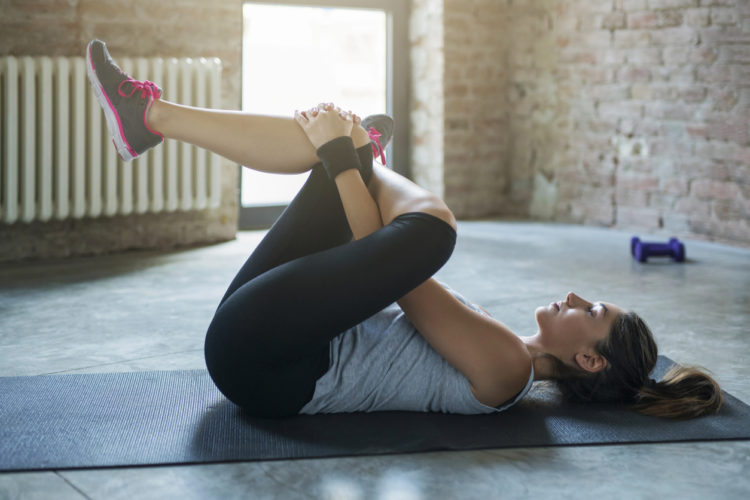Static stretching is a highly debated and controversial topic within the fitness and sports performance communities and is focused around the concept that sustained static stretching could impair subsequent performance (Rossi et al. 2010; Shrier 2004; Behm and Chaouachi 2011; Kay and Blazevich 2012). This has resulted in a shift from static stretching within a warm-up to a larger emphasis on dynamic stretching alone.
But, is this the best strategy for injury prevention and performance enhancement? Let’s look at a recent systematic review that included a comparison of the effects of static stretching and dynamic stretching on performance, range of motion and injury prevention. The study found static stretching <60 seconds is considered an effective method for increasing joint range of motion (ROM), and is often thought to improve performance and reduce the incidence of activity-related injuries. It also stated that post-stretching dynamic activity is recommended for reducing muscle injuries and increasing joint ROM with inconsequential effects on subsequent athletic performance (Behm, Blazevich, & McHugh 2016). A study by Kay & Blazevich (2012) researched pre-exercise static muscle stretching and the reports of reduction in power and force production. The key findings from this study showed static stretches of <45 seconds can be used in a pre-exercise protocol without significant decreases in “strength, power, or speed-dependent task performances.” Additional findings showed static stretches > 60 seconds “are more likely to cause a small or moderate reduction in performance,” and these pre-exercise programs are not typically used for both the athlete and general population. Behm & Chaouachi (2011) found shorter durations of stretching within a warm-up, such as a total stretching duration per muscle of 30 seconds might not negatively impact subsequent performance, especially if the population is highly trained.
What can we conclude with this information? First, we must look at the reasons to static stretch. Static stretching can be beneficial in many ways, such as correcting muscle imbalances, decreasing muscle hypertonicity, increasing joint ROM, relieving joint stress, improving the extensibility of the musculotendinous junction, maintaining the normal functional length of a muscle (length-tension relationships), decreasing the chance of injury and in turn enhancing power and strength (Clark, Lucett, & Sutton 2010 & 2014).
What should be noted is, the foregoing research studies are missing the importance of assessments and which specific muscles should be stretched and why. A systematic approach prior to exercise or performance activities should be used with any stretching protocol, and should include, but not limited to, the following movement screens as applicable: the overhead squat assessment, single leg squat assessment, modified squat assessment, sport-specific assessments (such as the Landing Error Scoring Assessment) and for those trained, goniometric and manual muscle testing. These assessments are able to identify muscle overactivity, muscle under activity, and detect muscle imbalances and faulty movement patterns. From those findings, the individuals stretching activities would focus on the muscles that were found to be causing the faulty movement pattern(s) (Clark, Lucett, & Sutton 2010 & 2014). The results would also determine the correct stretching protocol and what impact it will have on improving length-tension relationships, force coupling, neuromuscular efficiency, joint arthrokinematics, injury prevention, and performance enhancement.
In conclusion, when working with any population, a flexibility program is important for many reasons and should be designed for the specific needs of each individual.
THE NASM INTEGRATED FLEXIBILITY CONTINUUM
Different types of stretching elicit different types of responses from the neuromuscular system. It is important to understand the different types of flexibility techniques in order to apply the appropriate flexibility training program based on assessments, needs, and goals for each client or athlete (Clark & Lucett 2010).
There are three phases of flexibility used with the OPT™ model: corrective flexibility, active flexibility, and dynamic flexibility.
CORRECTIVE FLEXIBILITY:
Used in the OPT stabilization level, is designed to address altered joint motion by improving common muscle imbalances and joint ROM. Corrective flexibility uses self-myofascial release (SMR) followed by static stretching. Corrective flexibility employs autogenic inhibition, the process when neural impulses sensing tension are greater than the impulses causing muscle contraction, thus, causing the muscle to relax.
Acute variables for corrective flexibility:
- SMR
- Apply gentle pressure (via foam roller or similar equipment) on tender points/knots
- Hold 30 seconds (minimum)
- Static stretch
- 1-3 sets
- Hold at first point of tension for 30 seconds
ACTIVE FLEXIBILITY:
Pre-activity warm-up after movement compensations are addressed, appropriate for the OPT strength level, is designed to improve soft tissue extensibility in all planes of motion by employing reciprocal inhibition utilizing agonists and synergists to move a limb through a full range of motion while the functional antagonists are being stretched.
Acute variables for active flexibility:
- SMR (see above)
- Active-isolated stretches
- Hold past first point of tension 1-2 seconds
- 5-10 repetitions
- 1-2 sets
FUNCTIONAL FLEXIBILITY:
Pre-activity warm-up in power phase of training, used in the OPT power level, is designed to improve multiplanar soft tissue extensibility and provide optimum neuromuscular control throughout the full range of motion while performing functional movements that utilize the body’s muscles to control the speed, direction and intensity of the stretch. Functional flexibility uses dynamic stretching after SMR.
Acute variables for functional stretching:
- SMR (see above)
- Dynamic stretches
- 1-2 sets
- 10-15 repetitions
- 3-10 exercises
Examples of dynamic stretches include:
- Prisoner squats
- Multiplanar lunges with reach
- Single-leg squat touchdowns
- Tube walking
- Medicine ball chop and lift
- Medicine ball lunge with rotation
- Push-ups with rotation
- Russian twists

